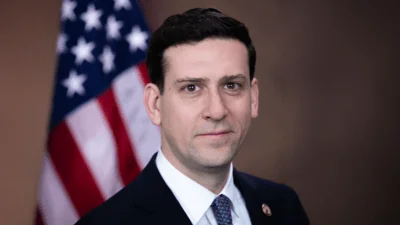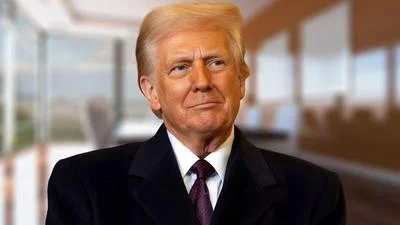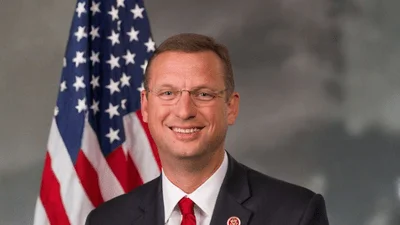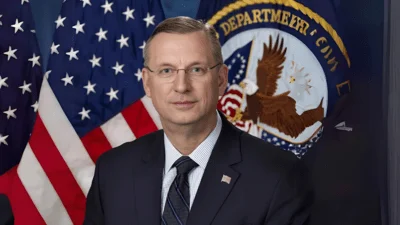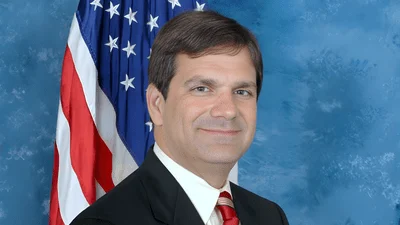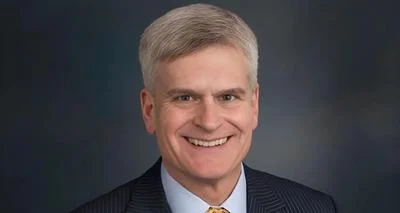Washington, D.C. -Today, Rep. Raja Krishnamoorthi, the Chairman of the Subcommittee on Economic and Consumer Policy, released new information detailing how federal officials failed to conduct effective coronavirus screenings of passengers entering the United States from Italy and South Korea during a period of rapid expansion in coronavirus cases in those countries.
The new information comes from a briefing to Subcommittee staff from agencies responsible for conducting and overseeing traveler screenings: the Centers for Disease Control and Prevention (CDC), Customs and Border Protection (CBP), the Department of Homeland Security’s Countering Weapons of Mass Destruction Office (CWMD), and the Department of State. The State Department also provided written responses to the Subcommittee this week.
“This investigation reveals another opportunity the Administration missed to limit the impact of coronavirus," stated Chairman Krishnamoorthi. “After imposing a travel ban and enacting health screenings for travel from China at the start of February, the President told us they had everything under control. Yet, the Administration did little else to stop the inflow of the virus through our airports until mid-March, and it disregarded valuable opportunities to slow the spread through enhanced entry screenings. Due to denials and delays, the Administration lost critical time it could have used to prepare and build up capacity to mitigate-a capacity we are now struggling to build while the virus wreaks havoc in our hospitals and homes."
On March 13, confirmed coronavirus cases in China were hovering at around 80,000, while confirmed cases in Italy and South Korea had quickly risen respectively to 17,660 and 7,979, which were some of the highest in the world. The information provided in the briefing showed that as the pandemic was spreading during critical weeks in February and March, the Trump Administration’s airport screening policies were limited and stagnant when proactive measures could have made a difference.
* White House Office Made Decision to Rely on Italian and South Korean Screeners. The decision to rely on Italy and South Korea to conduct screenings was made at the level of the Policy Coordination Committees (PCC) of the National Security Council (NSC). When asked who made the decision “during the time period between the third and thirteenth of March, to rely on screenings in Italy and South Korea as opposed to the US?," a senior CDC official responded that the decision was made “At the PCC level, the NSC level."
* Italian and South Korean Screeners Blocked Almost No Passengers from Flying to the United States. According to written answers provided by the State Department this week, few passengers were prohibited entry onto U.S.-bound flights from Italy: “Italian officials barred 13 passengers from boarding flights to the United States due to the screening program. On March 5, four passengers were barred from boarding a flight from Rome Fiumicino airport bound for the United States. On March 9, nine passengers were barred from boarding flights from Rome Fiumicino airport bound for the United States. No passengers were barred boarding flights from Milan Malpensa airport bound for the United States due to the screening."
The State Department confirmed similarly low numbers for South Korea: “Per ROK government figures, as of March 10, across carriers with direct U.S. flights, a total of 56 passengers were denied boarding. United and Delta denied boarding to five and 16 passengers, respectively. Korean Air took the strictest approach to passenger screening, highlighting that the airline had denied boarding to 25 passengers (a combination of ROK and U.S. citizens) since implementing health screening on February 28."
* U.S. Officials Had Relatively Limited Oversight for Health Screenings at Airports in Italy. During the briefing, CDC stated that for a period from March 3 through March 14, when the Administration relied on Italy to conduct screenings, CDC did not know how the government of Italy was conducting screenings and had no personnel in Italy observing screenings. In contrast, CDC did have a liaison in South Korea who reported to CDC over email to confirm preliminary pre-boarding temperature screenings were happening. According to the State Department’s written responses, officials from the U.S. Embassy in Rome and the Consulate General in Milan visited Italian airports “to observe the implementation of the screening" and conducted “multiple follow-up visits." The State Department did not maintain records of this oversight, which was confirmed only “via in-person visits to the airport and by way of telephone conversations with airport officials."
* Passengers Entering from Italy and South Korea Did Not Receive Health Screenings at U.S. Airports Even While the Administration Was Warning Americans About Coronavirus Risks in Those Countries. When CDC issued its highest level travel advisory for Italy and South Korea in late February advising Americans against nonessential travel, the Administration did not begin enhanced screening of travelers returning from those countries. Not until March 14, 2020, were travelers returning from Italy subjected to enhanced health screening, and travelers from South Korea never received enhanced health screenings when arriving in the U.S. Prior to March 14, passengers did not even receive travel health advisory handouts with information about coronavirus and about how to self-isolate for 14 days. That approach was contrary to the World Health Organization ’s Feb. 29, 2020, advice “to provide prevention recommendation messages to travelers."
* U.S. Had Ability to Screen In-Bound Passengers from Italy and South Korea at U.S. Airports, But Chose Not To Do So. On Jan. 17, CDC dispatched 100 staff members to three US airports (JFK, LAX, and SFO) to conduct screenings domestically for individuals arriving on U.S.-bound flight from Wuhan, Hubei Province. The Administration began enhanced screenings for all passengers arriving from China on February 2 at the same time the President restricted travel from China under Section 212 of the Immigration and Nationality Act (INA). During the briefing, the agencies stated that enhanced screenings were tied to presidential proclamations under Section 212 of the INA. But this was not a limitation imposed by any law or regulation, as shown by the fact that the agencies performed enhanced screenings for passengers from Wuhan in January without a Section 212 proclamation. The Administration could have expanded public health screenings throughout the month of February and early March, but did not. To this day, the U.S. is only performing enhanced screenings for coronavirus for travelers returning from China, Iran, the United Kingdom, Ireland, and the Schengen Area in Europe, the only regions subject to any INA Section 212 proclamation.
* After the Administration Began Enhanced Screenings for Travelers Returning from Italy and Other European Countries on March 14, It Did Not Robustly Screen for Coronavirus Symptoms. Of the approximately 250,000 airline passengers returning from travel-restricted countries that were screened by Department of Homeland Security’s Countering Weapons of Mass Destruction Office between Jan. 17, 2020, and March 29, 2020, “just under 1,500" (around 0.6%) were referred to CDC for public health screenings. And only about ten percent of passengers had their temperatures checked. CWMD conveyed that its informal policy is to check about one out of every ten passengers, in part because they “don’t want to slow things down.
* When the Administration Restricted Travel From Europe on March 14, 2020, It Put Passengers At Risk by Failing to Consider Social Distancing at Airport Bottlenecks. On March 11, 2020, the President announced that he was suspending entry of large classes of individuals from Europe beginning on March 14 at midnight. DHS followed by issuing a notice requiring enhanced screening of Americans returning from most of Europe beginning at the same time. A senior DHS official confirmed that the agency “expected a large load" of Americans following the announcement. CDC, CBP, and CWMD were so focused on getting staffed up “to process the people" that they did not address the need for social distancing measures. None of the agency officials who briefed the Subcommittee recalled any conversation about social distancing prior to March 14. On March 14, 24,000 passengers traveling back to the U.S. from Europe spent hours packed shoulder-to-shoulder while CBP, CWMD, and CDC struggled to perform the required screenings. A senior CDC official stated that there would be no way to know if people got sick in those lines because people were coming back from countries with community transmission.
